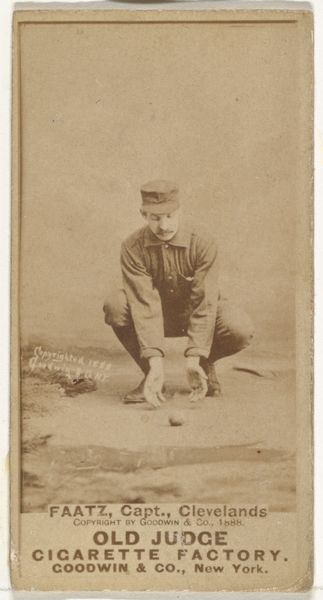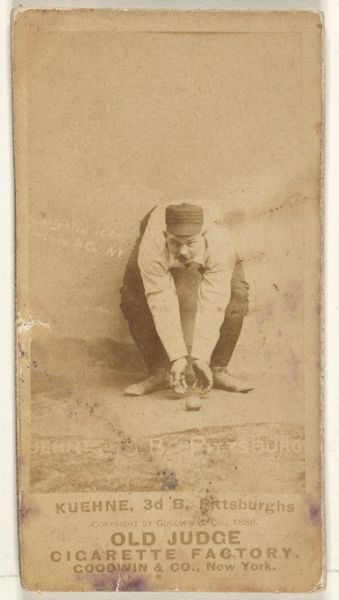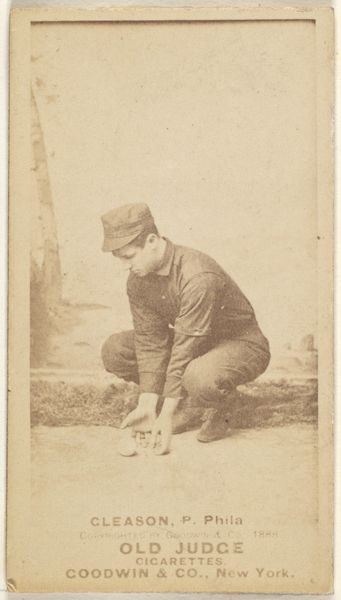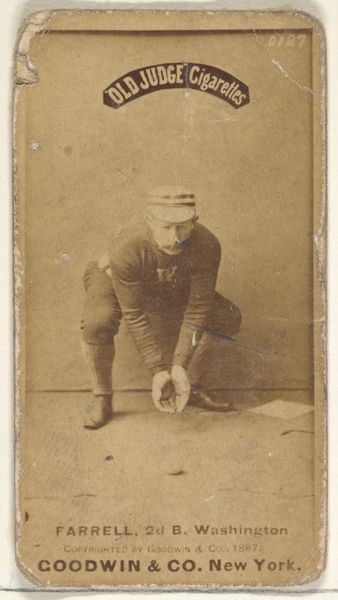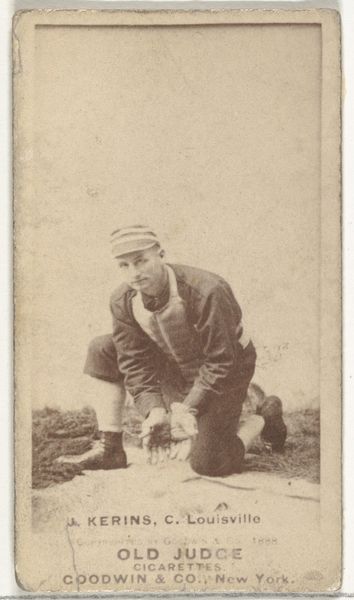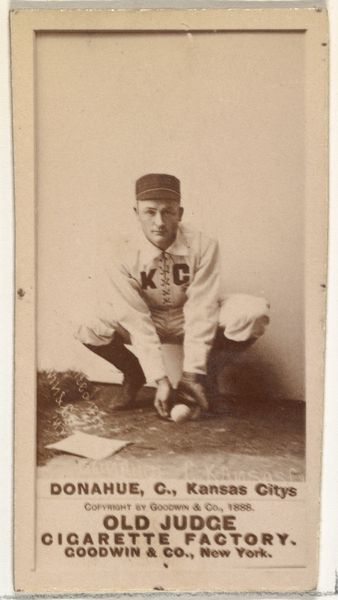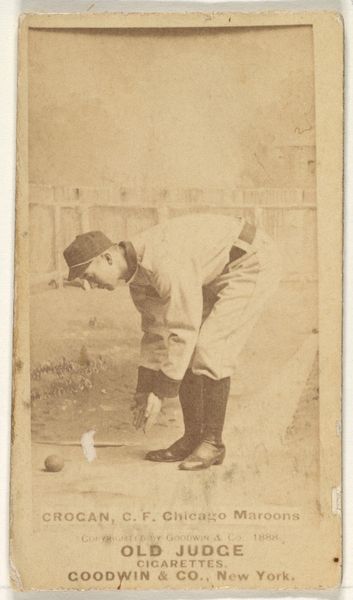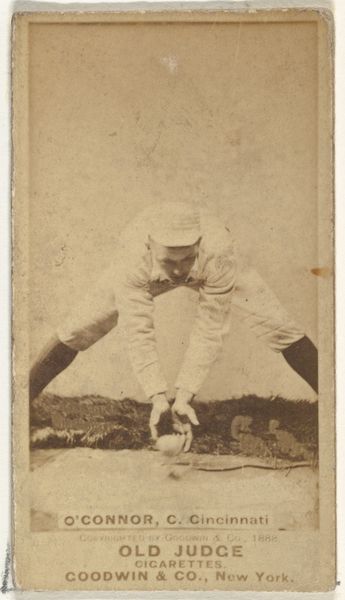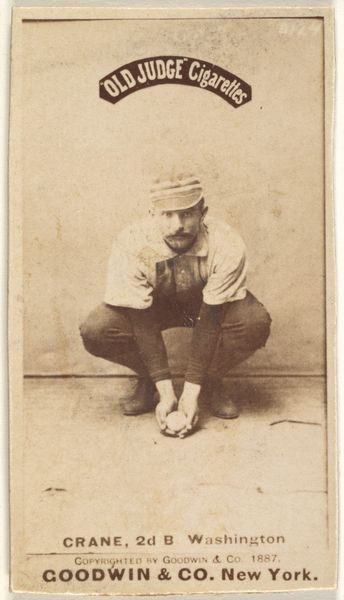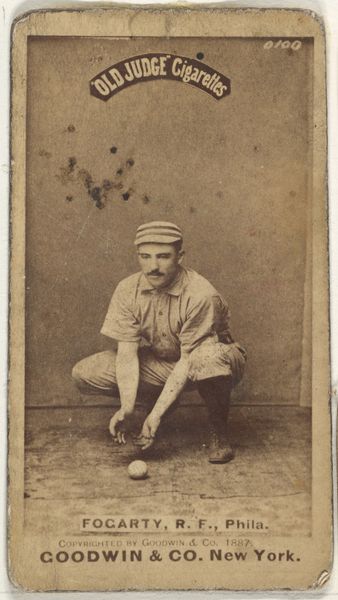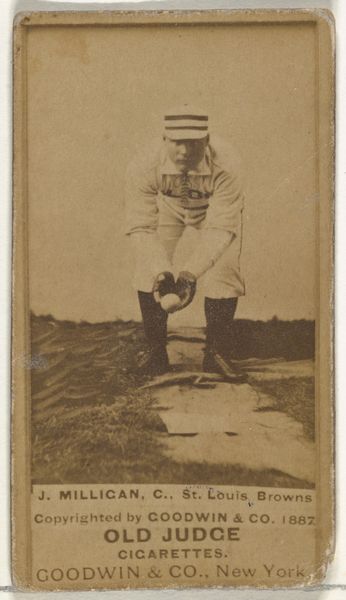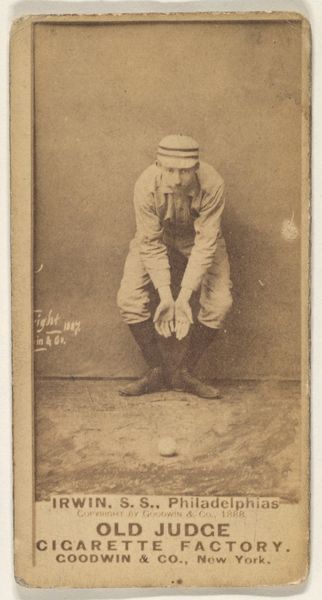
Jayson S. "Jay" Faatz, Captain, Cleveland, from the Old Judge series (N172) for Old Judge Cigarettes 1888
0:00
0:00
drawing, print, photography
#
portrait
#
drawing
# print
#
photography
Dimensions: sheet: 2 11/16 x 1 3/8 in. (6.9 x 3.5 cm)
Copyright: Public Domain
Curator: Looking at this diminutive print, "Jayson S. 'Jay' Faatz, Captain, Cleveland" from the Old Judge series created in 1888 by Goodwin & Company, what springs to mind for you? Editor: The sepia tone immediately gives it a feeling of something unearthed, almost ghostly. He's crouching, hands outstretched towards what looks like a baseball. There’s an immediate vulnerability, yet he is also presenting the material, an offering almost. Curator: It's intriguing how the Old Judge Cigarettes series, using photography and drawing transferred into a print format, blended advertising, sports, and popular culture. It circulated within a growing consumer society. These weren't viewed as high art; they were meant to sell tobacco. Editor: Absolutely. It begs the question of labour. Consider the processes. Photographing the baseball player, retouching the image through drawing, printing – this speaks volumes about the workforce involved and the level of consumption required to give them circulation via cigarette packets. Were the players even consulted, let alone fairly compensated? Curator: The players were allegedly given a share. Think about how these cards were collected, traded, and inserted into albums—it created a sense of connection to the sport that mirrored, in many ways, modern fan culture. Consider the baseball cards circulating now: the institutionalized big money that funds marketing and commodity production is something the Victorians started. Editor: You are right: a snapshot of Victorian capitalism that reflects on class, celebrity and exploitation of labor, all compressed into this cigarette card format! But how did these images influence attitudes towards baseball and athletes? These trading cards acted as social agents by conveying specific messages, fostering specific sentiments, and advancing the game by building emotional resonance and participation within local communities. Curator: They legitimized it, for certain. By placing Faatz's image within this established commercial system, Goodwin & Co. simultaneously created and reinforced the sport's status. The act of consumption through tobacco paralleled consumption through imagery, legitimizing baseball as a central aspect of the era's public identity. Editor: I wonder about that. This commercial imagery makes you reassess this everyday culture, but also makes me wonder how objects like this reflect on baseball’s social value back in the late 1880s. Curator: Exactly, it serves as a marker for understanding society then and for critically reassessing social value and processes within sports and art nowadays. Editor: Indeed; something to be critically conscious of.
Comments
No comments
Be the first to comment and join the conversation on the ultimate creative platform.
